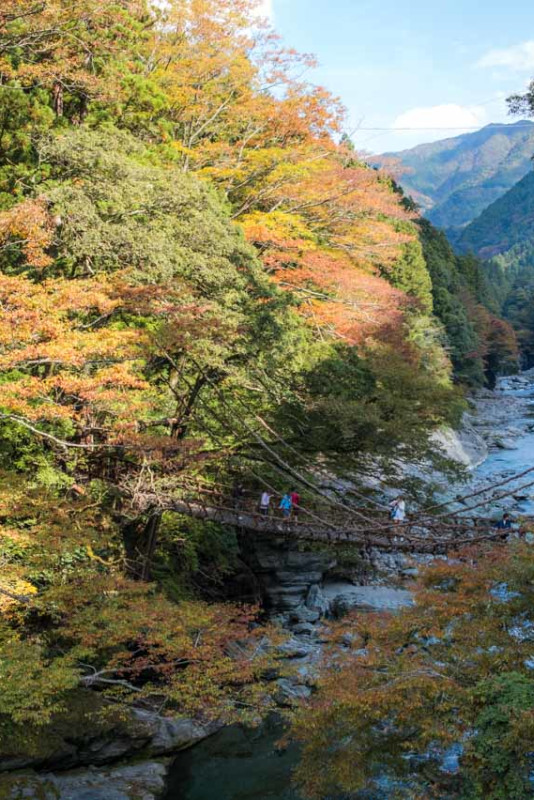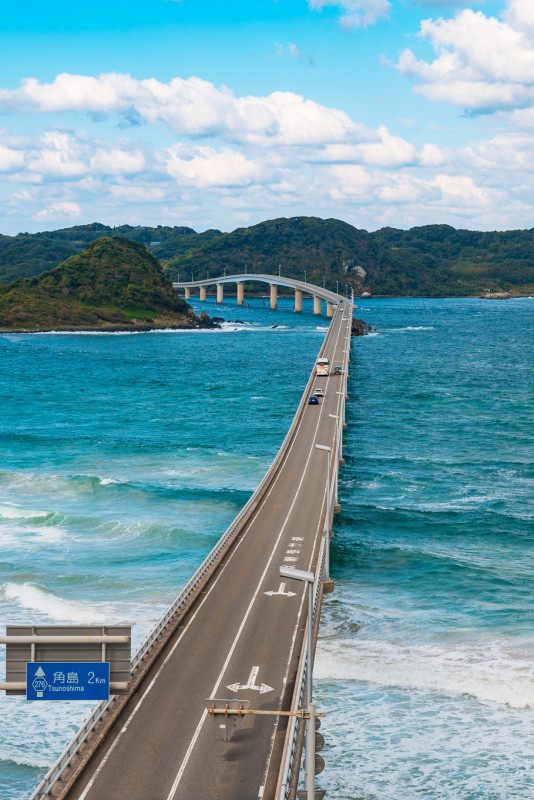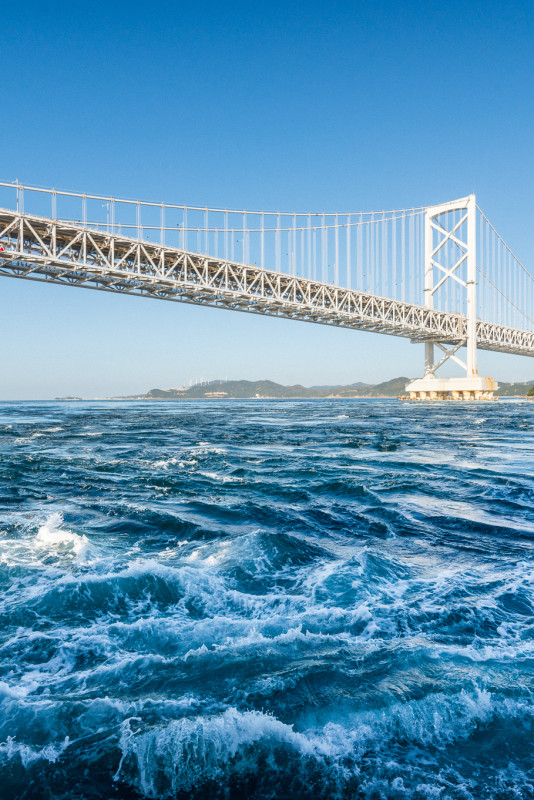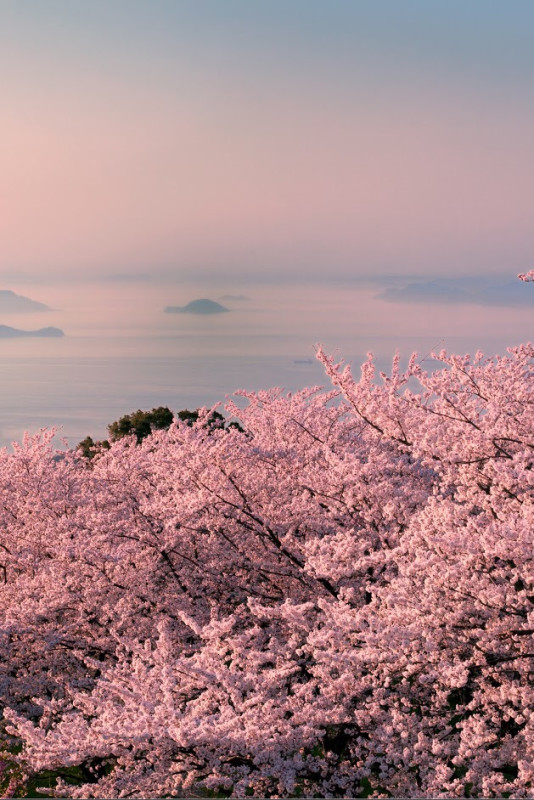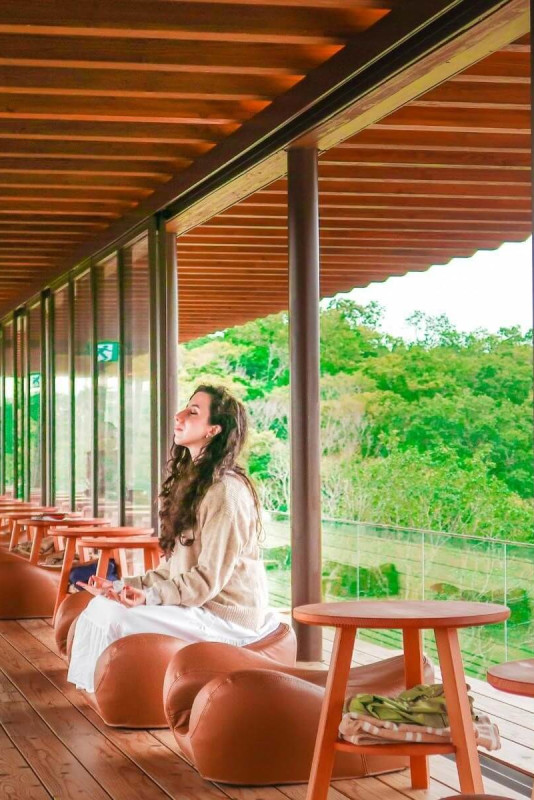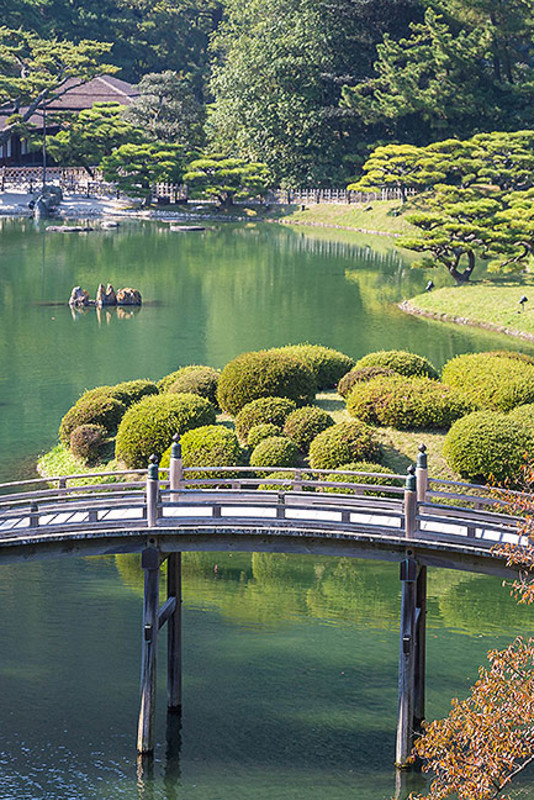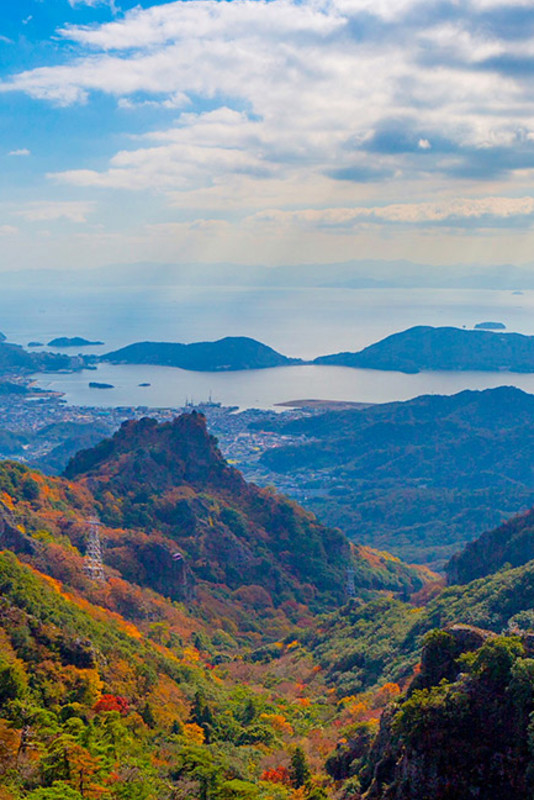Itineraries
Take a Deep Dive into the History and Culture of Hiroshima and Yamaguchi

This four-day itinerary takes in the sites of several pivotal events in Japanese history. From a dramatic medieval sea battle, to samurai castle towns and World Heritage Sites, concluding with the tragedy of Hiroshima, this is a must-do off-the-beaten-track adventure for history fans. There is also, of course, time for hot spring relaxation, great food and stunning scenery.
- Day 1
- Shimonoseki and Nagato
Travel: Fukuoka to Shimonoseki
・Take the Shinkansen from Hakata Station to Kokura Station (Approx 15 minutes)
・Take a local train from Kokura Station to Shimonoseki Station (Approx 15 minutes)
Dan-no-Ura Sea Battle Site
It was in the Kanmon Straits that separate Shimonoseki from the island of Kyushu that the Battle of Dan-no-ura was fought in 1185, a pivotal battle in the struggle between the two great samurai houses, the Taira (Heike) and Minamoto. In the face of a decisive defeat, many of the Taira forces committed suicide, including the child emperor Antoku, whose tomb is found at nearby Akama Shrine. Two impressive statues depicting the clan leaders stand in Mimosusogawa Park – Taira Tomomori, tied to an anchor before plunging himself into the sea, and Minamoto no Yoshitsune making his legendary “eight-boat leap”.
Replicas of the cannons employed by the Choshu domain to resist the unequal treaties imposed by foreign powers in the 1860s illustrate the strategic and historical importance of the Kanmon Straits, an important crossing point, connecting the Sea of Japan and the Seto Inland Sea since ancient times.
Chofu Mori House
Built in 1903 by the former feudal leaders of the region, this is a well-preserved stately samurai residence with gardens that change with the seasons. Enjoy matcha tea while taking in the tranquil scene before embarking on the next part of your journey.
Karato Fish Market & Kanmon Wharf
Shimonoseki’s Karato Fish Market is probably its most popular attraction. Prices are very reasonable and a great spot to enjoy the freshest sushi and sashimi. On the weekends the 1st floor of the market becomes very lively with many food stalls selling a variety of foods. Be on the lookout for Fugu (pufferfish) sashimi, a local specialty and a must-try in Shimonoseki. If raw fish makes you nervous, try Fugu karaage (deep fried pufferfish) from one of the vendors among the souvenir shops along Kanmon Wharf. For a more refined Fugu dining experience with a great view of the Kanmon Straits Bridge, head to Heike Chaya.
Travel: Shimonoseki to Nagato
While trains do run along the picturesque Japan Sea coast from Shimonoseki to Nagato (Approx 2 hours), to visit the many natural attractions along the route we highly recommend traveling by rental car or chartered taxi.
Driving the Japan Sea Coast
The drive from the Tsunoshima Bridge to Nagato offers scenic views of the Sea of Japan and also of the Japan countryside. From views of the sea, to views of old Japanese houses, rice fields, and mountains, this drive is an experience you won’t soon forget.
A highly recommended stop is Motonosumi Shrine. This shrine is located near a cliff, and is well known for the breathtaking views and the 123 red torii gates that lead to the cliff. While there, be sure to try your hand at throwing a coin into their offering box. It’s not like other offering boxes seen at shrines and temples. This one sits on the top portion of a large torii gate so people have to throw the coin up and try to get it in. Not only is it fun, but it is also said that those who are able to get their coin into the box will have good fortune.
If time allows, the Higashi Ushitobata Rice Terraces are located less than 10 minutes by car from the shrine. There is a viewing point with a few parking spaces and from here you can enjoy the terraced rice fields and the Sea of Japan.
Just east of Nagato city center is Omijima, part of the Kita-Nagato Kaigan Quasi-National Park, which boasts some 40 kilometers of breathtaking coastline. The huge, ocean-carved, monolithic rocks seen just offshore here have earned it the nickname the "Alps of the Sea." Sightseeing cruises lasting anywhere from 50 minutes to 1 hour and 20 minutes leave from Senzaki Port.
Senza Kitchen is a roadside station that is located right next to Omijima Sightseeing Cruise port. There is a restaurant, a coffee stand, a market, and a few food stands outside which makes this a great spot to grab a meal or a snack, and maybe even some souvenirs. Also a great spot for a restroom break and to stretch those legs if needed.
Nagato Yumoto Onsen
Nagato Yumoto Onsen is a lovely little hot spring town in Nagato that has some really nice onsen hotels, restaurants, cafes, and shops. Walking paths allow you to enjoy a nice stroll through the town and, in spring, the cherry blossoms here are lovely.
Accommodation: Bettei Otozure
To arrive at Bettei Otozure, located on the banks of the Otozure River that flows through Nagato Yumoto Onsen, is to fall into the embrace of luxury. As you make your way through the ryokan - the grounds of which include a beautiful Japanese garden, water courtyard and tea house - the warm lighting and skillful meshing of elements of both tradition and modern ryokan design work to switch your brain into relaxation mode. Rooms come with private indoor and outdoor hot spring baths and the food is, as would be expected, an exceptional showcase of the abundance of Yamaguchi Prefecture’s produce, from land and sea. Guests at Bettei Otozure also have access to the adjacent Otani Sanso which has many public baths to choose from.
- Day 2
- Hagi and Yuda Onsen
Travel: Nagato Yumoto Onsen to Hagi
・It is a 35-minute dive from Nagato Yumoto Onsen to Hagi.
・Alternatively, taking the local train from Nagato Yumoto Station to Hagi Station, changing trains at Nagato takes between 1 and 2 hours.
The seaside castle town of Hagi
The drive (or train ride) from Nagato Yumoto Onsen to Hagi is another scenic journey through the countryside with glimpses of the Sea of Japan. Enjoy views of the mountains, rice fields, old houses, and everyday life in the Japan countryside. It was to the relative backwater of Hagi that the powerful Mori clan were relegated after they found themselves on the losing side in the struggle for control of Japan that was decided at the climactic Battle of Sekigahara in 1600 and ushered in the Tokugawa Shogunate. In the 19th century, however, the small city was to have a historical impact beyond its size as one of the movements that led to the Meiji Restoration, bringing an end to the 250 year dominance of the Tokugawa Shogunate in the 1860s.
The castle town area of Hagi is where you will find historic homes, castle ruins, and pottery shops. See the defensive strategies employed in designing the white-walled lanes and feed the koi carp along the Aibagawa River. It’s very easy to spend a few hours here walking around admiring the old buildings and ducking into pottery shops so be sure to allow ample time to explore this area. If you get hungry while wandering around, there are also a few cafes in and around the old castle town where you can enjoy a meal or a snack.
Hagi Mae 698 provides excellent cycle tours of the castle town and surrounding areas, providing easy to understand historical context and local knowledge.
Tokoji Temple
Founded in 1691, Tokoji Temple is where the graveyard for the third, fifth, seventh, ninth, and eleventh Mori feudal lords is located. The first, second, fourth, sixth, eighth, tenth, and twelfth lords are buried at nearby Daishoin Temple. Here you will see a Chinese influenced architectural style that is noticeable when entering the red Chinese style gate at the main entrance. The graveyard is located in the back of the temple and the tombs overlook hundreds of stone lanterns that were donated by members of the clan. The stone lanterns at Tokoji are lit every year at the start of the Obon festival to welcome home the souls of the dead and then again on the last day of the event to guide the souls back to the land of the dead.
Hagi-yaki Pottery
Hagi is one of the most famous pottery towns in Japan. Approximately 400 years ago the local feudal lord, Terumoto Mori, appointed potters in the castle town to create pottery for his own personal use and to be used as gifts. Hagi ware is known for its natural texture which comes from the type of local clay that is used. For those who wish to try their hand at making pottery there are some pottery shops that offer a pottery making or pottery painting experience. One shop near the castle ruins that offers this type of experience is Senshuraku Jozan Pottery Studio. To the west (relatively close to Tokoji Temple), also offers workshops and showcases an interesting
Tenryu Pottery Studio (Japanese) selection of traditional Hagi ware alongside contemporary interpretations. Advance reservations are generally required for pottery workshops.
Travel: Hagi To Yuda Onsen
・It is approximately 1 hour by car from Hagi to Yuda Onsen.
・Alternatively take a bus from Hagi to Yamaguchi Station and change to a local rain to Yuda Onsen Station (Approx 2 hours)
Yuda Onsen
Yuda Onsen is a small onsen area located in Yamaguchi City that dates back to around the year 1200. There is a legendary tale that states the natural hot spring was first discovered when an injured white fox wandered into the springs and was healed.
There are several public ashiyu, hot springs in which to warm and relax your feet, in the town. At the chic, modern Kitsune-no-ashiato (Foxes Footprints) Cafe and Information Center, you can enjoy ashiyu both inside and in the garden, as well as coffee, desserts and local sake tasting sets.
A beautiful five-storied pagoda built in 1442 can be seen in the picturesque grounds of Rurikoji Temple, about 8 minutes by car from Yuda Onsen (undergoing extensive restoration project until autumn season of 2025).
Accommodation: Matsudaya Hotel
A hotel that has been around for over 300 years, when you step into Matsudaya Hotel you will feel like you have stepped back in time. The main building was built in the Taisho period and guests who stay in this building are also able to see the garden from their room. Meals are served in the guest rooms, providing privacy as guests dine on exquisitely prepared dishes using seasonal and local ingredients. A stay at this historical property is a must when visiting Yamaguchi City and the Yuda Onsen area.
URL: https://www.matsudayahotel.co.jp
- Day 3
- Iwakuni and Miyajima
Travel: Yuda Onsen to Iwakumi, Kintaikyo Bridge
・Take a local train from Yuda-Onsen Station to Shin-Yamaguchi Station (Approx 10 minutes)
・Take the Shinkansen from Shin-Yamaguchi Station to Shin-Iwakuni Station (Approx 30 minutes)
・Take a bus from Shin-Yamaguchi Station to Shin-Iwakuni Station (Approx 15 minutes)
Iwakuni, home to one of the most beautiful bridges in Japan
Iwakuni is home to Kintaikyo Bridge is a historic wooden bridge with five arches spanning the Nishiki River and is considered one of the most beautiful bridges in Japan. The original bridge was built in 1673 and while it has been damaged and washed away a few times, the integrity of the original design has been maintained. The shape and the location of Kintaikyo Bridge have not changed in over 300 years.
Walk across the five wooden arches and head over to
Honke Matsugane, which is a tourist information center. It’s a great spot to try on samurai armor, sample some local Iwakuni sake and local dishes. The nice thing is that everything is sample size so people can try the local cuisine and still have room for lunch or dinner. Two of the dishes that are a must try are the lotus root and the Iwakuni Sushi. Iwakuni is known for their lotus fields and for being one of the top lotus root producers in Japan. The lotus root is also unique here in that there are nine holes in the lotus root, compared to eight holes in lotus root grown everywhere else in Japan. Iwakuni Sushi is a mix of rice, eggs, veggies, and seasonings that is pressed down until it kind of looks like a sushi cake.
If something sweet sounds good after sampling local foods, Sasakiya Kojiro Shoten is a soft serve shop loved by locals and visitors alike. With over thirty flavors to choose from, there is sure to be something for everyone.
The Kashiwabara Art Museum, located next to the Iwakuni Castle Ropeway Station, contains an amazing collection of artifacts that are available for viewing all year around and some special collections that are displayed for limited times. The samurai swords and samurai armor are impressive to see on display, but there are other items also so it’s recommended to allow enough time to visit all three floors of the museum.
Travel: Iwakuni to Miyajima
・Take the train from Iwakuni Station to Miyajima-guchi Station (Approx 25 minutes)
・Take the ferry from Miyajima-guchi Ferry Terminal to Miyajima Ferry Terminal (Approx 10 minutes)
Itsukushima Shrine and Miyajima
Itsukushima Shrine is a unique Shinto shrine with a history of 1400 years on the island of Miyajima. Built over water, it appears to float during high tide. What this shrine is most famous for though is the large red torii gate that stands in the Seto Inland Sea and also looks like it is floating when the tide starts to come in. It’s nice to visit when the tide is out too though because you can then walk up to the large torii gate and see it up close. Another way to enjoy the shrine and torii gate is to visit it in the evening, when both are illuminated.
Near Itsukushima Shrine is a busy street with shops, restaurants, and cafes. Here you can find the famous Momiji Manju (maple leaf shaped sweets), grab freshly grilled oysters to snack on, craft beers to enjoy right away or to take home with you, and a variety of souvenirs.
Accommodation: Iwaso
A stay at Iwaso is a truly authentic ryokan experience. Originally established as a teahouse in 1854, it has become the go-to choice for dignitaries (Iwaso hosted the G7 leaders for dinner during the 2023 Hiroshima G7 Summit) and celebrities seeking a quiet retreat and old world charm while visiting Miyajima Island. Located at the entrance to Momijidani (Maple Valley), a short distance from both Itsukushima Shrine and the ropeway and hiking trails to Mt. Misen, Iwaso is the perfect place to stay to make the most of your time on the island. The service, discrete and efficient, is, as you would expect, top notch and the kaiseki meals, featuring local specialities such as oysters and conger eel are exceptional. As well as well-appointed tatami mat rooms, four private streamside cottages, each with its own unique history and design, are also available.
URL: http://www.iwaso.com/english/
- Day 4
- Miyajima and Hiroshima
Daishoin Temple
Daishoin was founded in 806 by Kukai (known posthumously as Kobo Daishi), who was one of the most famous monks in Japan and the founder of Shingon Buddhism. There are many buildings and statues to enjoy as you walk around the grounds. On the steps to the temple are spinning wheels inscribed with Buddhist scriptures. It is said that turning the scriptures as you walk up the steps will have the same benefits as reading them, so even if the one spinning the wheels doesn’t speak or read Japanese, they can also receive the blessings that usually come with reading the scriptures. Daishoin is a temple where visitors will want to take their time and really see everything on their grounds. It is especially beautiful in the fall, when the maple trees on the grounds change colors.
Kimono and culture workshops in a local temple with OKEIKO Japan
Experience wearing a kimono, take part in a Japanese tea ceremony or, try your hand at Japanese calligraphy in a historic temple with a pretty garden with Okeiko Japan on Miyajima. The kimono wearing experience is a very popular one and people are often amazed by how complex dressing in kimono actually is. Once dressed, visitors have an opportunity to use their cameras or phones for photos. Because Okeiko Japan is located in an old temple, there are some great photo ops.
Travel: Miyajima to Hiroshima
・Take the ferry from Miyajima to Miyajima-guchi (Approx 10 minutes)
・Take the local train from Miyajima-guchi Station to Hiroshima Station (Approx 30 minutes)
World Heritage Sea Route
High speed ferries make the journey between Hiroshima’s two UNESCO World Heritage Sites in approximately 45 minutes. Ferries leave for Hiroshima from the pier next to the main passenger ferry terminal. Please check the website as schedules change according to the tides.
URL: http://www.aqua-net-h.co.jp/en/heritage/
Hiroshima Atomic Bomb Dome & Peace Memorial Park
Originally built in 1915, the building formerly known as the Hiroshima Prefectural Industrial Promotion Hall was destroyed on August 6, 1945 when the atomic bomb was dropped on Hiroshima. What remained was preserved, and in 1996 it was added to UNESCO’s World Heritage List as a symbol of the devastation that was caused by the first atomic bomb.
In addition to the A-bomb Dome, Hiroshima Peace Memorial Park is also home to many memorials and monuments, including the Cenotaph for the Victims of the Atomic Bomb, Peace Flame, and the well interpreted Peace Memorial Museum.
Hiroshima Castle & Shukkeien Garden
Feudal lord, Terumoto Mori chose Hiroshima as the capital of the expansive holdings he inherited from his father, the great samurai Motonari Mori, and built his castle here in 1589, only to be sent to Hagi after defeat at the Battle of Sekigahara just over a decade later. The castle buildings were destroyed by the atomic bomb in 1945. Inside the reconstructed keep, visitors will find a history museum and visitors can enjoy panoramic views of the surrounding area from the top floor.
Shukkeien Garden was built by Nagaakira Asano who became lord of Hiroshima in 1619. The garden’s path circles a pretty lake and takes you through a variety of scenery and past tea houses and trees that survived the A-bombing. Feed the resident carp and look out for turtles sunbathing on the rocks.
Hiroshima Okonomiyaki
Okonomiyaki is a Hiroshima specialty that is a must try when visiting this area. It’s like a savory crepe with lots of shredded cabbage, some soba noodles or udon noodles, some more crepe batter, and thin slices of pork (kind of like bacon, but different) piled on top. It gets flipped and pressed so that it kind of looks like a pancake. Kind of. A savory sauce is brushed on top and some seaweed is sprinkled on top. A small metal spatula is given to each person and typically this is what is used to cut and each the okonomiyaki right off the grill. For those who can’t eat pork, it can be ordered without it.


































































